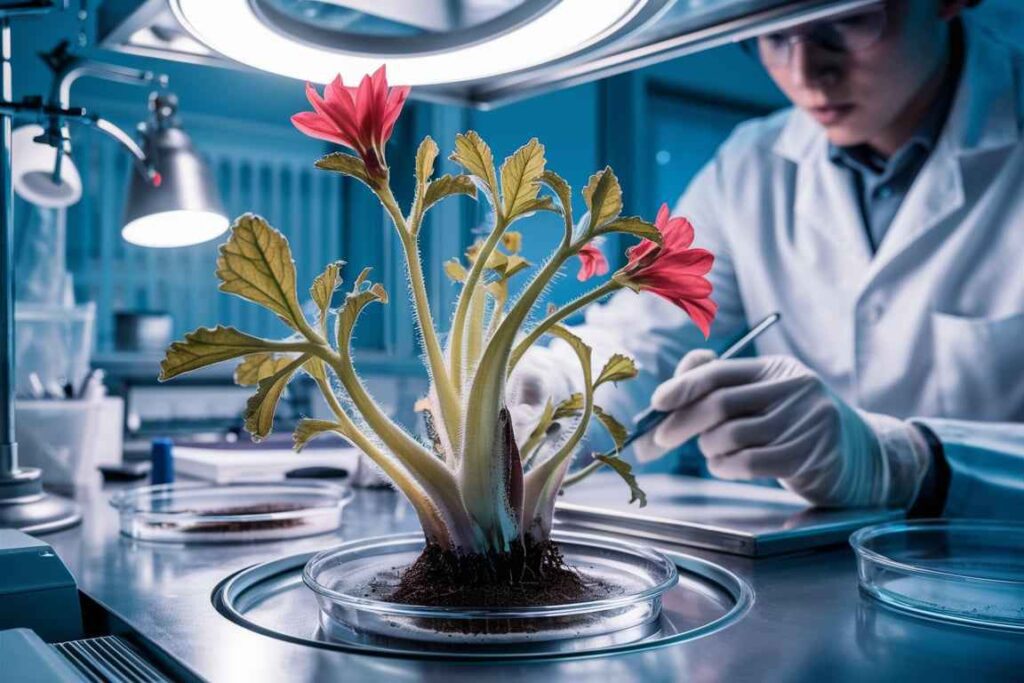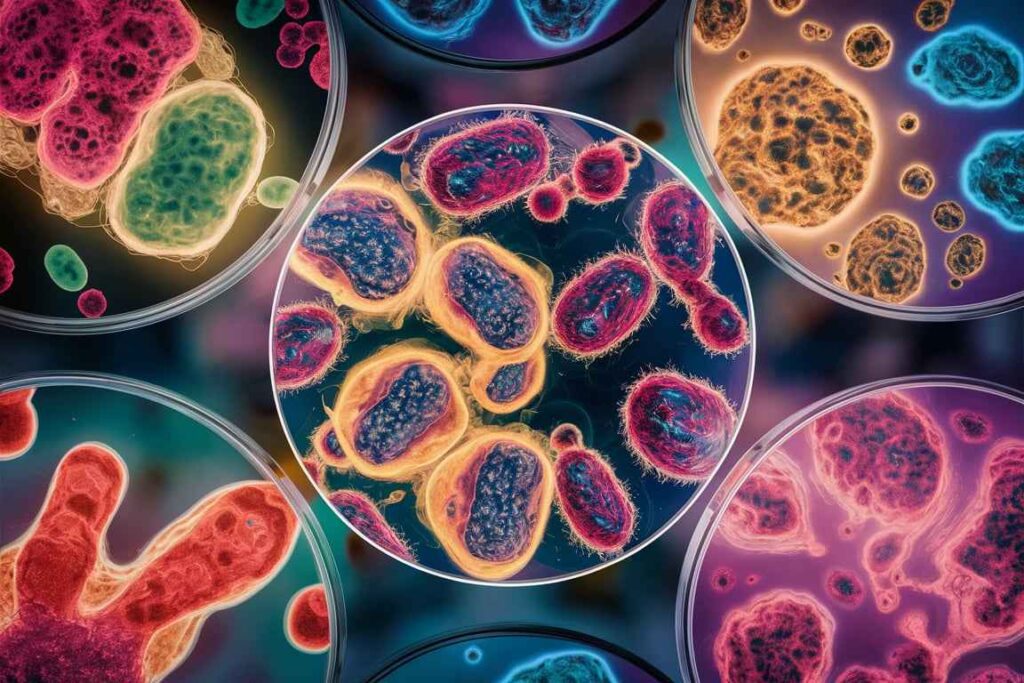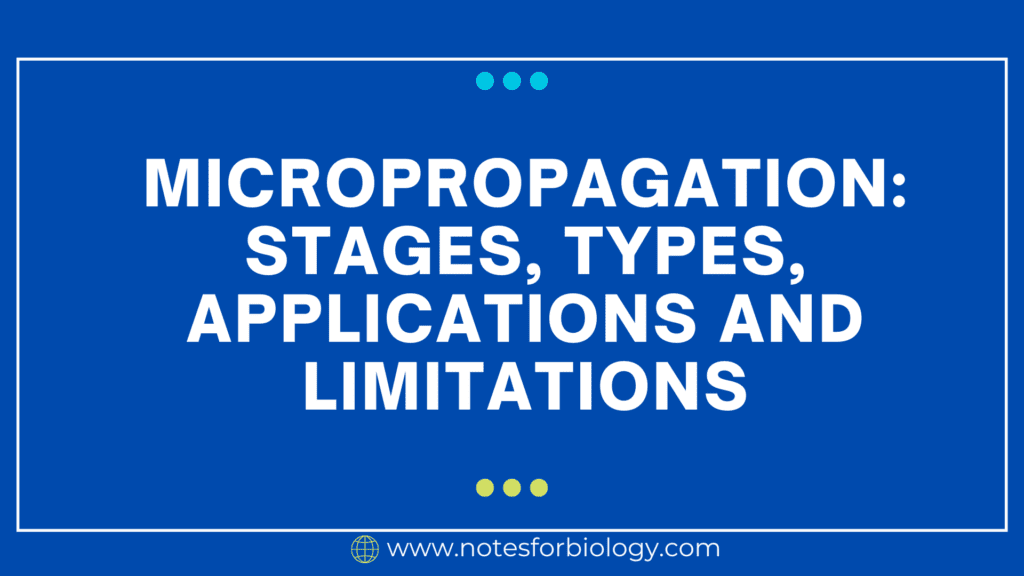Micropropagation is a technique used for the rapid multiplication of plant material, typically involving tissue culture methods. It is widely used in horticulture, agriculture, and forestry to produce large numbers of genetically identical plants.
Table of Contents
Micropropagation
Micropropagation is a technique used in plant biology to rapidly multiply plants through in vitro culture of plant tissues or cells under sterile conditions, typically in a nutrient-rich medium. This method allows for the production of large numbers of genetically identical plants from a single parent plant, ensuring uniformity and consistency in the propagated plants.
Micropropagation involves several key steps: selecting and preparing plant material, inducing shoot and root formation, and acclimatizing plantlets to the external environment. This method ensures the production of large numbers of genetically identical plants, which is especially useful in horticulture, agriculture, and conservation.

Stages of Micropropagation
1. Establishment Stage
- Small samples of plant tissue (explants) are chosen and sanitized to prevent microbial contamination.
- Explants are placed on a nutrient-rich media under aseptic conditions to initiate tissue culture.
2. Multiplication Stage:
- Explants are moved to a medium containing plant growth regulators (cytokinins) to stimulate the production of numerous shoots.
- Subculturing is the process of continuously transferring newly developed shoots to fresh media to increase the number of shoots produced.
3. Rooting Stage:
- Root Induction: Shoots are placed in a medium containing auxins to induce root development.
- Rooted branches grow into full plantlets.
4. Acclimatization Stage:
- Transition to Soil: Plantlets are gradually acclimated to external circumstances by shifting them to soil or another growth medium.
- Hardening Off: Plantlets are subjected to controlled ambient conditions in order to survive outside of the culture environment.
Types of Micropropagation
1. Shoot Culture:
- Shoots from explants are propagated, then rooted and acclimatized.
2. Meristem Culture:
- Uses meristematic tissues to create virus-free plants, which are often employed to eradicate illnesses.
3. Callus Culture:
- Explants are grown into disorganized tissue (callus), which can then be encouraged to develop branches and roots.
4. Somatic embryogenesis:
- Embryos are formed from somatic (non-reproductive) cells and can eventually develop into plantlets.
5. Anther Culture:
- Cultivation of anthers or pollen grains yields haploid plants, which are useful for plant breeding.
Applications of Micropropagation
1. Rapid Clonal Propagation

- Produces enormous numbers of similar plants quickly while preserving genetic consistency.
2. Production of Disease-Free Plants:
- Meristem culture produces virus-free plants, which is essential for horticulture and agriculture.
3. Conservation of Germplasm:
- Preserves uncommon or endangered plant species by storing their genetic material in vitro.
4. Commercial horticulture:
- Commercial multiplication of ornamental plants, fruits, and vegetables.
5. Plant breeding:
- Increases the breeding rate by rapidly proliferating new cultivars or hybrids.
6. Genetic engineering:
- Enables the introduction of novel genetic features via genetic alteration and subsequent spread.

Frequently Asked Question
What is Micropropagation ?
Micropropagation is a technique used in plant biology to rapidly multiply plants through in vitro culture of plant tissues or cells under sterile conditions, typically in a nutrient-rich medium. This method allows for the production of large numbers of genetically identical plants from a single parent plant, ensuring uniformity and consistency in the propagated plants.
What are the applications of Micropropagation ?
The applications of Micropropagation are
1. Rapid Clonal Propagation
2. Production of Disease-Free Plants
3. Conservation of Germplasm
4. Commercial horticulture
5. Plant breeding
Related Article

